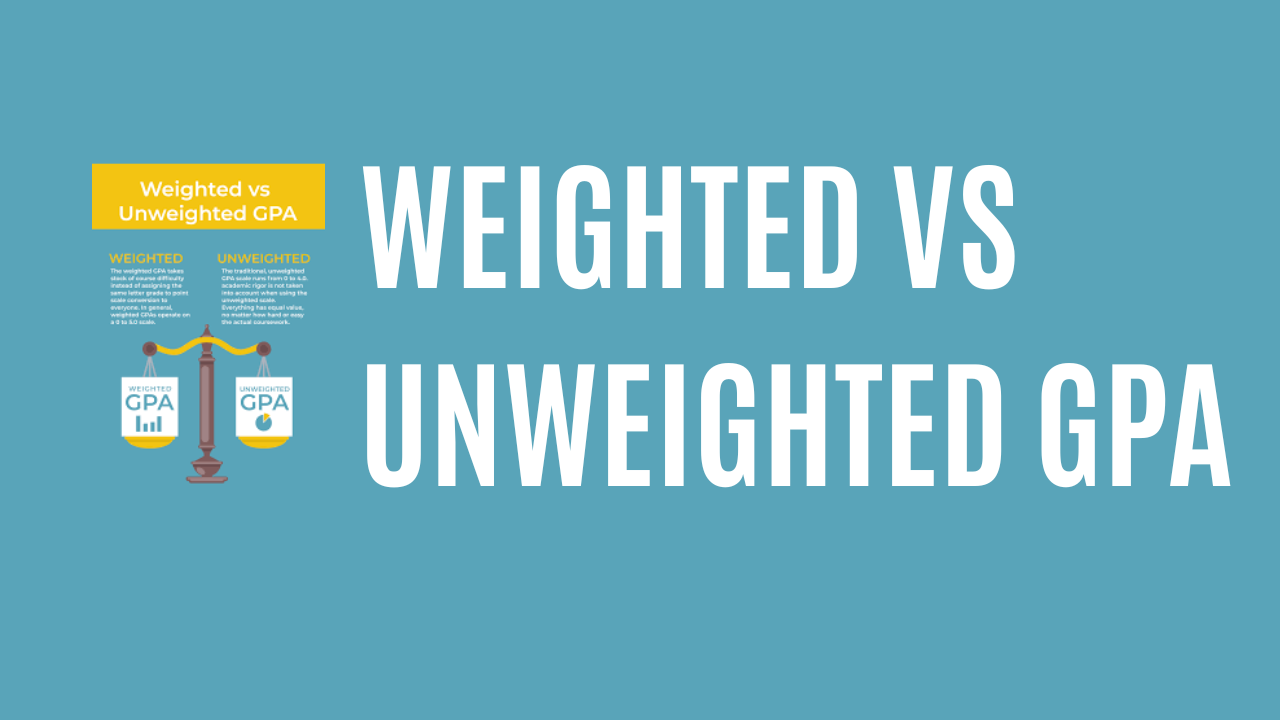GPA Breakdown: Weighted vs. Unweighted Explained
Discussing high school academic success often brings you two different sorts of GPAs, or Grade Point Average, that are weighted and unweighted. This brings in the question of what is a weighted and unweighted GPA, in the minds of students as well as parents.
Computed on a traditional 4.0 scale where an A equals 4.0 points, a B equates to 3.0 points, and so forth, the unweighted GPA is the easier of the two. Whereas, the difficulty of subjects is weighted in weighted GPA, as its name suggests. Usually, schools utilize a 5.0 scale for this GPA type, however, variations in scales could be present.
We are going to discuss both types of GPA and will try to understand the distinctive features included in both types so that you and other students reading the blog to have clarity.
Weighted GPA- What Does it Refer to?
A Weighted GPA (Grade Point Average) is a calculation of a student’s academic success that takes the rigor of the classes they have taken into consideration. It is quite different from the traditional GPA, where all courses are the same; if a child selects a difficult subject, he or she will be given extra points for it. Some of the difficult subjects include Advanced Placement (AP), International Baccalaureate (IB), honors, or college-level courses.
Unweighted GPA- What Does it Refer to?
An unweighted GPA does not take into consideration the level of difficulty of a course, also it is a regular benchmark for evaluating students in the United States. All the subjects are treated equally in this type of GAP, whether they are tough ones or easier ones.
As for how to calculate unweighted GPA, one only needs to cover the GPA points on the scale of 4.0. For example, if the percentage range of between 93 to 96, the grade will be A, and the GPA would be 4.0.
Unweighted GPA v/s Weighted GPA- Explore the Differences
Unweighted GPA treats all subjects as being equal on the standard scale of 0.0 to 4.0 and disregards the degree of difficulty of courses. For example, an A in an AP class is treated the same as an A in a regular class.
A weighted GPA assumes grades and course difficulty into account, with some institutions using a 5.0 or 6.0 scale. Therefore, if you are getting an A in an AP class, it would be of more value than an A in a normal class. The aim basically is to encourage the students so that they will enroll in more difficult classes or subjects. While unweighted GPAs offer a clear-cut and easily comparable fine measure of performance, they fail to account for the difference in course difficulty.
The weighted GPA sets forth a more complete picture of academic functioning, while on the other hand, the differences in courses offered by different institutions may prevent a good comparison facility from being set up. With weighted GPAs sometimes having a greater influence on class rankings and honors like valedictorian, high school transcripts include both types of GPAs and influence college admissions.
Students will benefit if they comprehend the difference between the two properly, as it will help them decide which subjects they should take if they are aiming for higher grades or a good GPA.
We also hope that this blog has been able to clear your doubts regarding what does unweighted GPA mean, and you were also able to understand the idea of weighted GPA. It is also expected that you can now easily calculate weighted as well as unweighted GPAs after reading the blog.

